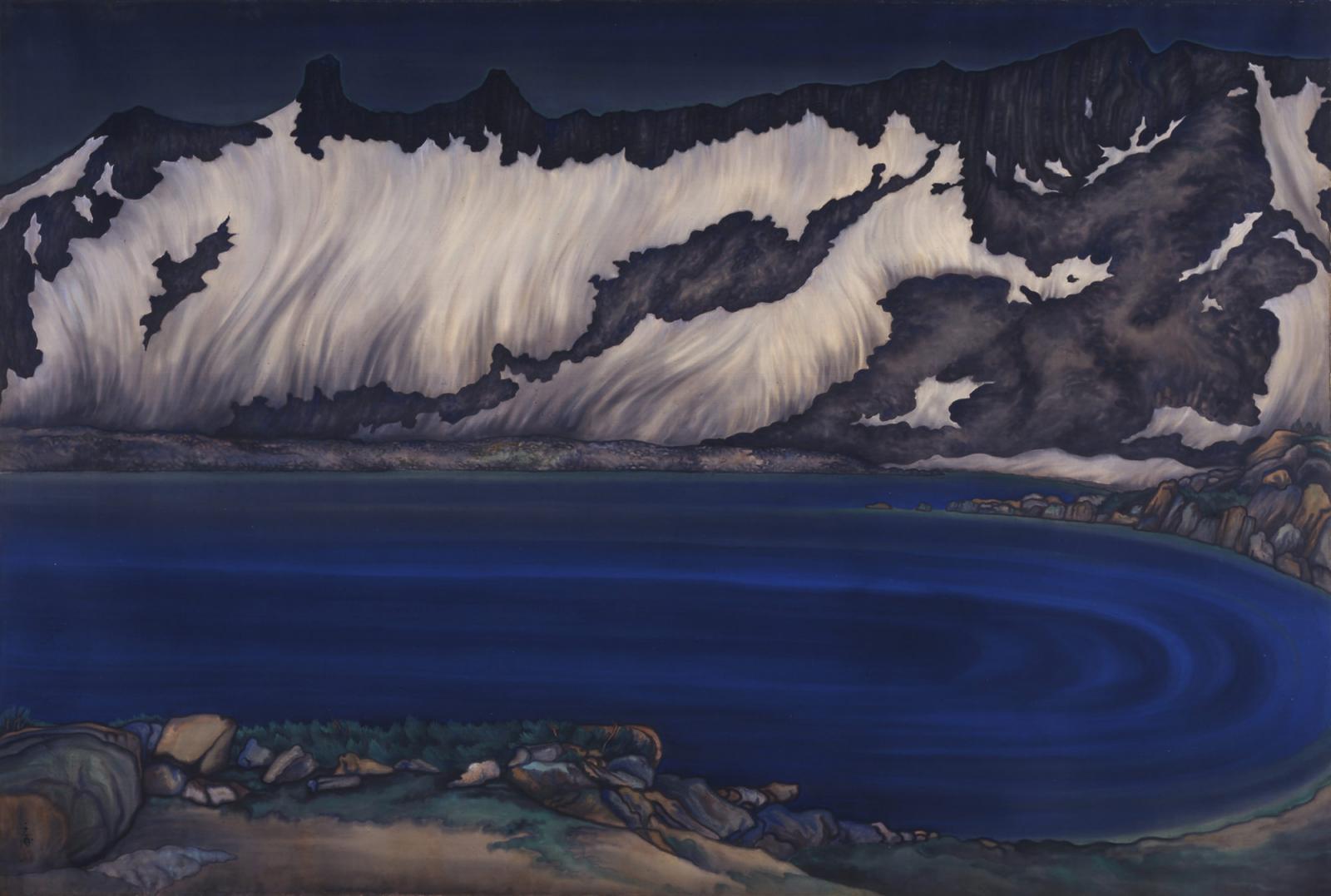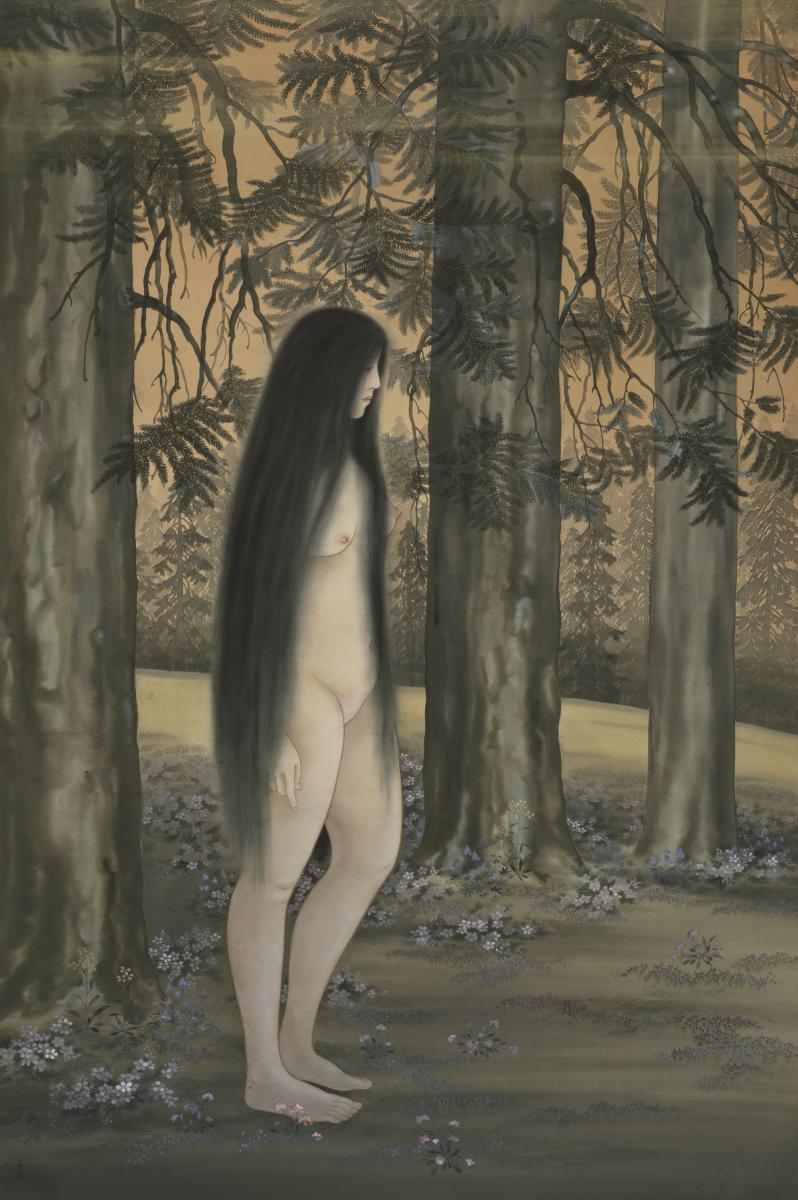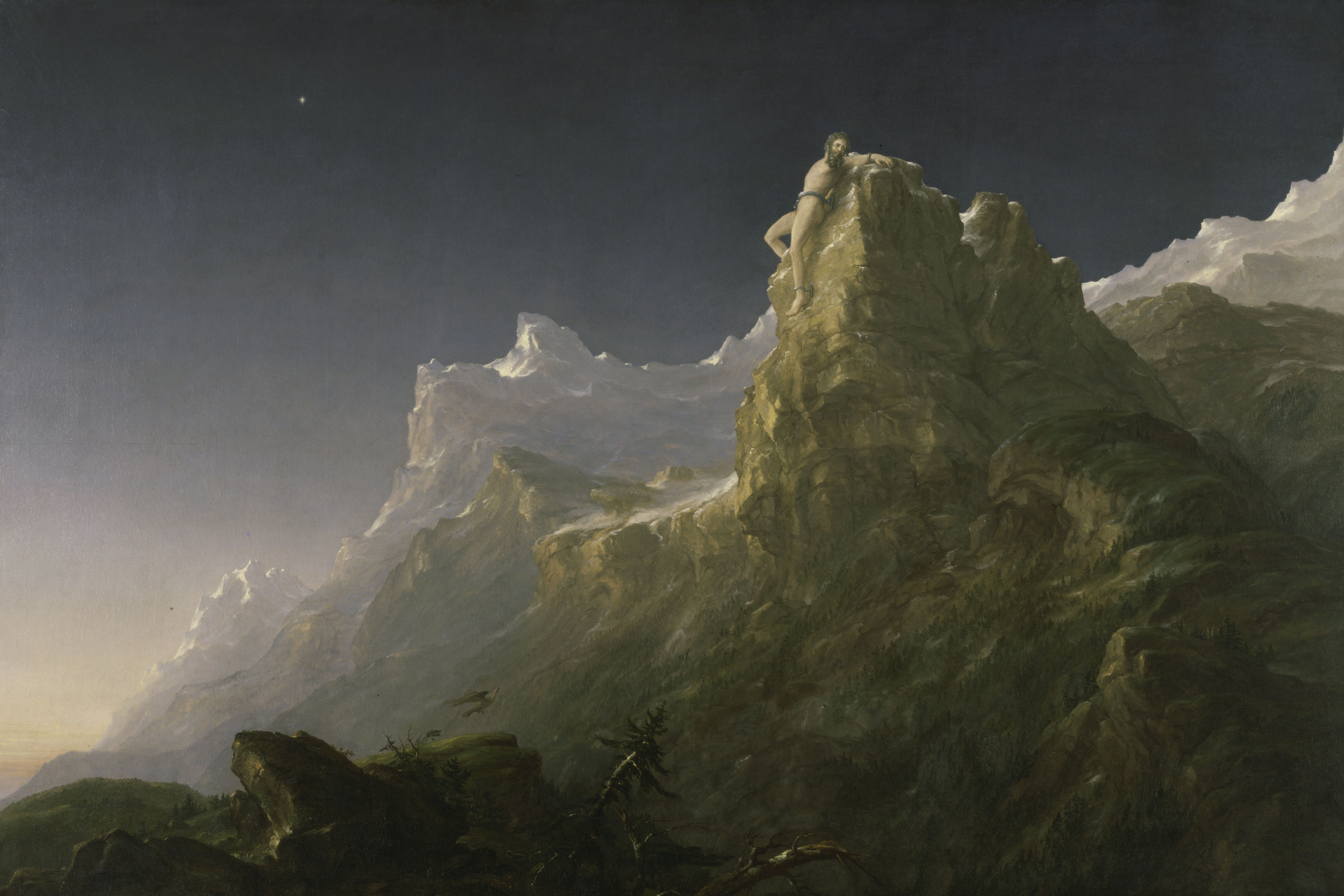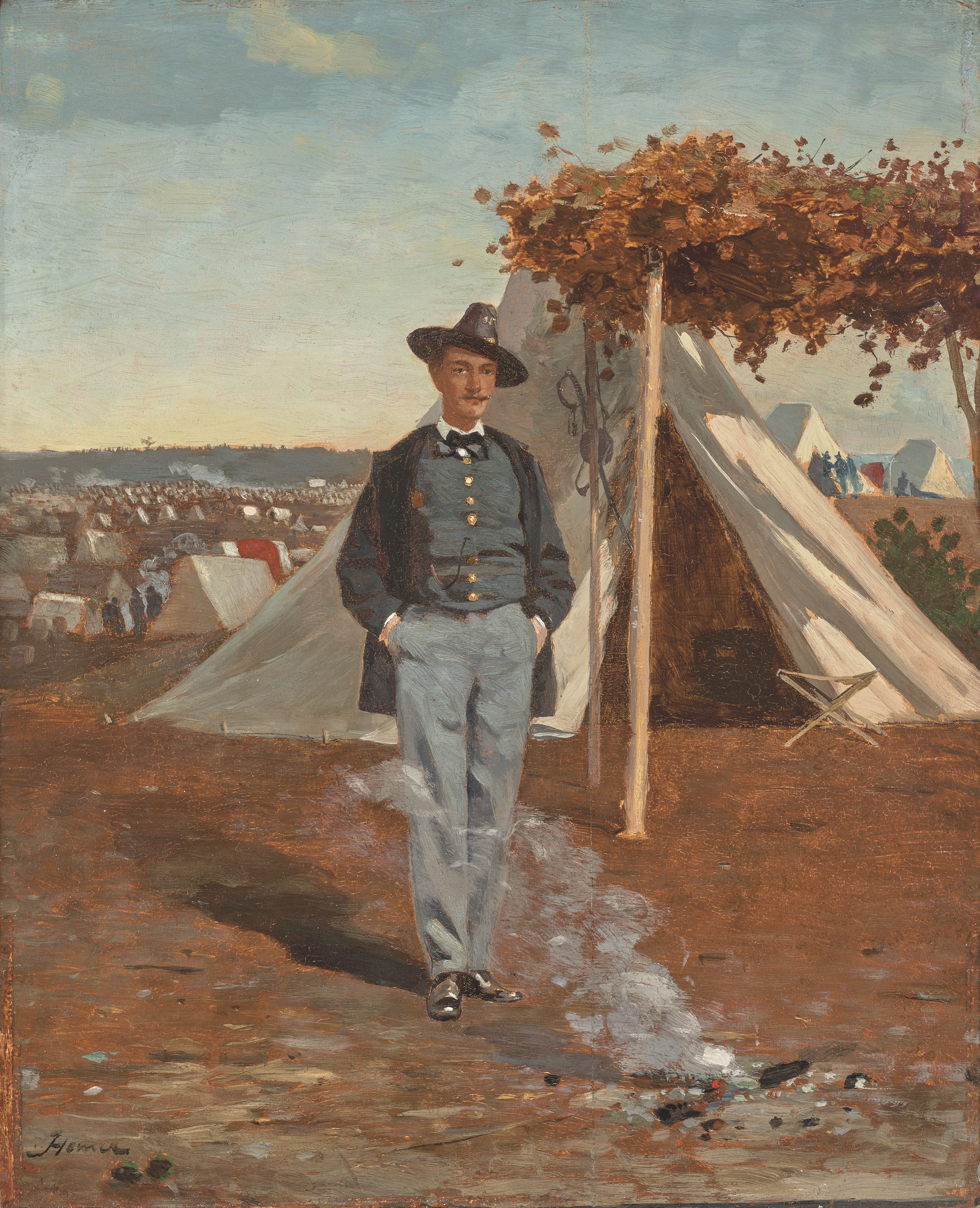Lake Basin in the High Sierra

When have you experienced transcendence?
This painting, inspired by a 1927 trip, depicts a lake in a valley beneath Yosemite’s Johnson Peak, south of Tuolumne Meadows. Describing the scene, Obata recalled, “Countless streams run down the frozen mountainside, lending a sublime melody. Man’s very soul and body seem to melt away into the singular silence and tranquility of the surrounding air.” Although Obata’s composition was inspired by a specific site, the generic title leaves space for the viewer’s imagination.



